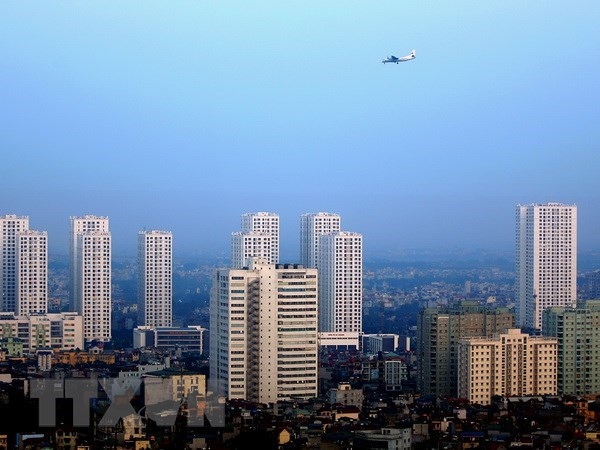Hanoi looks to recoup growth momentum right in 2021
The capital city has recorded economic expansion of 3.94% this year amid the COVID-19 pandemic, and it is expecting to regain momentum to secure 7.5% growth in 2021.
At its 18th session that opened on December 7, the 15th-tenure municipal People’s Council heard that despite the impact of the coronavirus outbreak, Hanoi’s growth was still positive and achieved or surpassed 16 of the 22 targets for 2020. This year’s estimated growth of 3.94% is about 1.5 times higher than the overall figure of Vietnam.
The city has continued to take the lead nationwide in building new-style rural areas, with 10 outlying districts and 368 communes earning the title.
Vice Chairman of the National Assembly Do Ba Ty said local authorities should work harder to improve the investment and business climate, promote Hanoi’s competitiveness, assist enterprises to develop, and prioritise the application of technological advances and new production models with higher productivity, quality, and efficiency.
Stressing the need for stronger determination, he also asked Hanoi to capitalise on opportunities and advantages while swiftly addressing shortcomings and difficulties, pointing out the immediate tasks of keeping good control of COVID-19, sustaining growth, and ensuring social security.
Proposing measures to recover growth, deputies of the People’s Council highlighted the necessity to accelerate public investment disbursement, assist pandemic-hit businesses, and increase dialogue with farmers and enterprises.
During the meeting, the council approved a resolution on this year’s socio-economic development and the development plan for 2021.
For the next year, Hanoi targets gross regional domestic product (GRDP) growth of some 7.5%, per capita GRDP of about VND135 million (US$5,800), total investment in society rising 12%, exports up 5%, and inflation kept at less than 4%.
It is also aimed at bringing down the number of households living under the city’s new poverty line by 20%, raising the rate of rural households getting clean water to 85%, and having the last 14 communes recognised as new-style rural areas in 2021.

